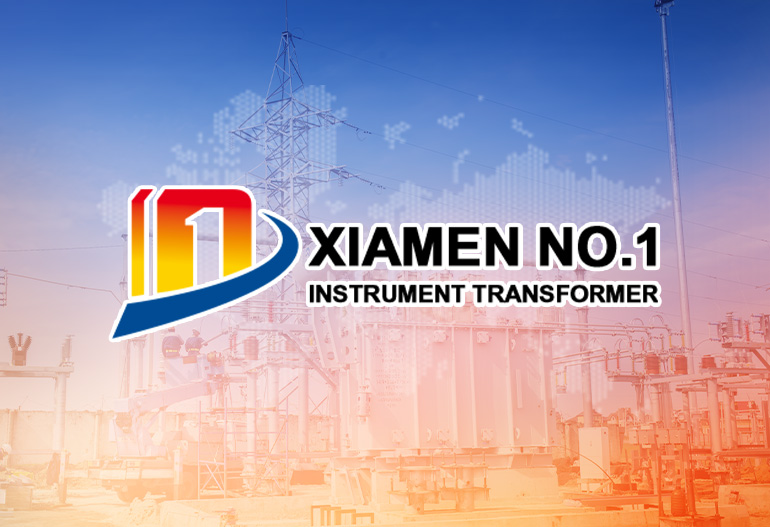
News
Installation Methods and Application Scenarios of Bushing Current Transformers
Introduction
1. Installation Methods of Bushing Current Transformers
1.1 Pre-Installation Preparations
1.1.1 Equipment Inspection
Visual Inspection: Check for physical damage (e.g., cracks in insulation, dents in metal components) and ensure all labels (voltage rating, accuracy class, ratio) match the design specifications. For oil-immersed BCTs, verify oil levels and absence of leaks; for SF₆-insulated models, confirm gas pressure meets standards (typically 0.4–0.6 MPa at 20°C).
Technical Documentation Review: Cross-reference the BCT’s datasheet with the system’s electrical parameters (e.g., rated current, short-circuit current withstand capacity) and installation drawings. Key parameters include:
Rated primary current (e.g., 1000 A, 2000 A)
Accuracy class (e.g., 0.2 for metering, 5P20 for protection)
Insulation level (e.g., 110kV, 220kV, 500kV)
Calibration Check: Ensure the BCT has passed pre-installation calibration (e.g., ratio error ≤0.2%, phase displacement ≤10 minutes for class 0.2) to guarantee measurement accuracy.
1.1.2 Environmental and Tool Preparation
Environmental Conditions: Install BCTs in environments meeting specifications:
Temperature: -40°C to +70°C (standard range; adjust for extreme climates with heating/cooling systems).
Humidity: ≤95% (non-condensing) to prevent insulation degradation.
Contamination: Avoid areas with excessive dust, corrosive gases (e.g., industrial fumes), or vibration (e.g., near heavy machinery). For coastal regions, use anti-corrosion coatings (e.g., epoxy powder) to resist salt spray.
Tools and Materials: Prepare insulated tools (rated for the system voltage), torque wrenches (to avoid over-tightening), cleaning agents (e.g., isopropyl alcohol for insulation parts), and sealants (e.g., silicone rubber for weatherproofing). For SF₆ BCTs, have gas recovery and testing equipment (e.g., dew point meters) on-site.
1.2 Step-by-Step Installation Procedures
1.2.1 Mounting the Bushing and BCT Assembly
- Transformer Bushing Integration:
Insert the bushing into the transformer tank’s flange, ensuring the BCT’s primary conductor aligns with the transformer’s high-voltage lead.
Secure the bushing flange to the tank using bolts, applying uniform torque (per manufacturer guidelines, e.g., 50–80 N·m for 110kV bushings) to prevent oil leaks.
Connect the BCT’s secondary leads to terminal blocks inside the transformer’s control cabinet, using color-coded wires (e.g., red for phase A, yellow for phase B) to avoid phase reversal.
- GIS Bushing Installation:
Position the BCT-equipped bushing at the GIS enclosure’s penetration point, ensuring the SF₆ gas chamber is properly sealed.
Use a centering tool to align the BCT’s primary conductor with the GIS busbar, minimizing air gaps that could cause partial discharge.
Tighten flange bolts in a crisscross pattern to maintain gas tightness (leak rate ≤1×10⁻⁷ Pa·m³/s as per IEC 60694).
1.2.2 Insulation and Sealing
Oil-Immersed BCTs: After mounting, fill the bushing with insulating oil (e.g., mineral oil, synthetic ester) to the specified level, ensuring no air bubbles remain (use vacuum degassing if necessary). Replace the oil conservator’s breather to prevent moisture ingress.
Dry-Type BCTs: Clean the epoxy resin insulation with a lint-free cloth and apply a thin layer of insulating varnish to enhance moisture resistance.
Outdoor Installations: Install weather shields (e.g., silicone rubber sheds) to protect the BCT from rain, snow, and UV radiation. Ensure drainage holes in the mounting structure to prevent water accumulation.
1.2.3 Electrical Connections and Testing
Secondary Wiring: Connect the BCT’s secondary terminals to metering devices (e.g., wattmeters) or protection relays (e.g., overcurrent relays) using shielded cables to reduce electromagnetic interference (EMI). The secondary circuit should be grounded at a single point to avoid ground loops.
Post-Installation Testing:
Insulation Resistance Test: Use a megohmmeter to measure insulation resistance between primary and secondary windings (≥1000 MΩ for 110kV BCTs).
Power Frequency Withstand Voltage Test: Apply 1-minute AC voltage (e.g., 200kV for 110kV BCTs) to verify insulation integrity.
Ratio and Phase Error Test: Use a CT tester to confirm accuracy (e.g., ratio error ≤0.5% for protection class 5P20).
Partial Discharge (PD) Test: For EHV/UHV BCTs (≥220kV), measure PD levels (≤10 pC) to detect hidden insulation defects.
1.3 Safety Considerations
High-Voltage Hazard: Ensure the system is de-energized and grounded before installation. Use personal protective equipment (PPE) such as insulated gloves, arc-flash suits, and safety glasses.
Mechanical Loads: Avoid exceeding the BCT’s maximum allowable axial/radial loads (e.g., ≤500 N for 220kV bushings) to prevent structural damage.
Environmental Risks: In seismic zones, use anti-vibration mounts to withstand earthquakes (up to 0.3g acceleration as per IEEE 693).
2. Application Scenarios of Bushing Current Transformers
2.1 High-Voltage Substations
AIS Substations: In 110kV–500kV AIS, BCTs are mounted on transformer bushings, circuit breaker bushings, and busbar supports. For example, 220kV transformer bushings integrate BCTs to measure load current and detect short circuits, triggering protective relays to isolate faults within milliseconds.
GIS Substations: GIS uses SF₆ gas for insulation, making compactness critical. BCTs integrated into GIS bushings eliminate the need for separate CT enclosures, reducing substation footprint by 30–50% compared to AIS. This is especially valuable in urban areas with limited space (e.g., downtown substations in megacities like Shanghai or Tokyo).
2.2 Power Transformers
HV Side Monitoring: BCTs on the high-voltage side (e.g., 500kV) of power transformers measure primary current, enabling precise metering for billing and load management. Their high insulation strength (up to 1000kV) withstands the transformer’s full operating voltage.
Protection Functions: BCTs detect abnormal currents (e.g., through-fault currents during transformer internal faults) and send signals to differential relays, which trip the transformer within 10–50 ms to prevent damage. For example, in a 1000MVA transformer, a BCT with a 5P10 accuracy class ensures reliable fault detection even under 10× rated current.
2.3 Transmission Lines
Line Terminals: At transmission line endpoints (e.g., 800kV UHV DC converter stations), BCTs integrated into bushing insulators measure current flow, supporting grid stability control (e.g., adjusting reactive power compensation).
Corona Monitoring: In UHV lines (≥1000kV), BCTs with built-in sensors detect corona discharge—an indicator of insulation degradation—by monitoring harmonic currents. This enables predictive maintenance, reducing unplanned outages.
2.4 Industrial Applications
Motor Control Centers (MCCs): In 10kV–35kV MCCs, BCTs monitor current in large induction motors (e.g., 5000kW motors in rolling mills). They trigger overload relays if current exceeds 120% of rated value, preventing motor burnout.
Arc Furnaces: Steelmaking arc furnaces draw intermittent, high currents (up to 100kA). BCTs with wide dynamic range (e.g., 1:200) accurately measure these fluctuations, supporting energy efficiency optimization and preventing electrical fires.
2.5 Renewable Energy Systems
Wind Farms: In onshore/offshore wind turbines (e.g., 6MW turbines), BCTs are installed in the nacelle’s high-voltage bushings to measure current from the generator. Their rugged design withstands vibration (up to 20g) and salt spray (in offshore farms).
Solar Power Plants: Large-scale solar parks (≥100MW) use BCTs in inverter stations to monitor DC-to-AC conversion currents. Dry-type BCTs are preferred here due to their resistance to high temperatures (up to 70°C) in desert environments.
Hydropower Stations: BCTs in 25kV–110kV hydropower generators measure current during peak load (e.g., during monsoon seasons), ensuring stable power injection into the grid.
2.6 Railways and Transportation
Traction Substations: 25kV AC or 1.5kV DC traction substations use BCTs to monitor current in overhead lines. Their fast response time (≤1ms) enables quick detection of short circuits caused by pantograph arcing, protecting the traction transformer.
Metro Systems: In underground metro networks, SF₆-insulated BCTs are used in GIS to save space and resist moisture, ensuring reliable operation in humid tunnel environments.
2.7 Marine and Offshore Applications
Offshore Platforms: BCTs in 33kV–132kV offshore substations must withstand saltwater corrosion, high humidity, and seismic activity. They are used to monitor power distribution to drilling equipment and living quarters.
Naval Vessels: Military and commercial ships use BCTs in their electrical systems (e.g., 6.6kV shipboard grids) to measure current in propulsion motors and auxiliary systems. Their compact design saves space in cramped engine rooms.
3. Advantages of Bushing Current Transformers in Applications
Space Efficiency: Integration with bushings eliminates the need for separate CT enclosures, reducing equipment footprint—critical in urban substations and GIS.
High Insulation Performance: Designed for HV/EHV systems (up to 1100kV), BCTs withstand voltage stresses and partial discharge, ensuring long-term reliability.
Wide Dynamic Range: Modern BCTs (e.g., with digital output) measure currents from 5% to 2000% of rated value, adapting to variable loads in renewable energy and industrial systems.
Easy Maintenance: Sealed designs (e.g., oil-immersed or SF₆-insulated) reduce maintenance needs, lowering lifecycle costs.
4. Challenges and Future Trends
Cost: High-voltage BCTs (≥500kV) are expensive due to precision manufacturing and insulation materials.
Installation Complexity: EHV BCTs require specialized tools and trained personnel, increasing installation time.
Digitalization: Integration of IoT sensors for real-time monitoring (e.g., temperature, PD levels) via 5G, enabling predictive maintenance.
Material Innovation: Use of advanced composites (e.g., fiber-reinforced polymer) to reduce weight and improve corrosion resistance.
Wide Bandgap (WBG) Integration: Compatibility with WBG devices (e.g., SiC MOSFETs) in smart grids for faster response and higher efficiency.
Conclusion

XUJIA
I graduated from the University of Electronic Science and Technology, majoring in electric power engineering, proficient in high-voltage and low-voltage power transmission and transformation, smart grid and new energy grid-connected technology applications. With twenty years of experience in the electric power industry, I have rich experience in electric power design and construction inspection, and welcome technical discussions.

